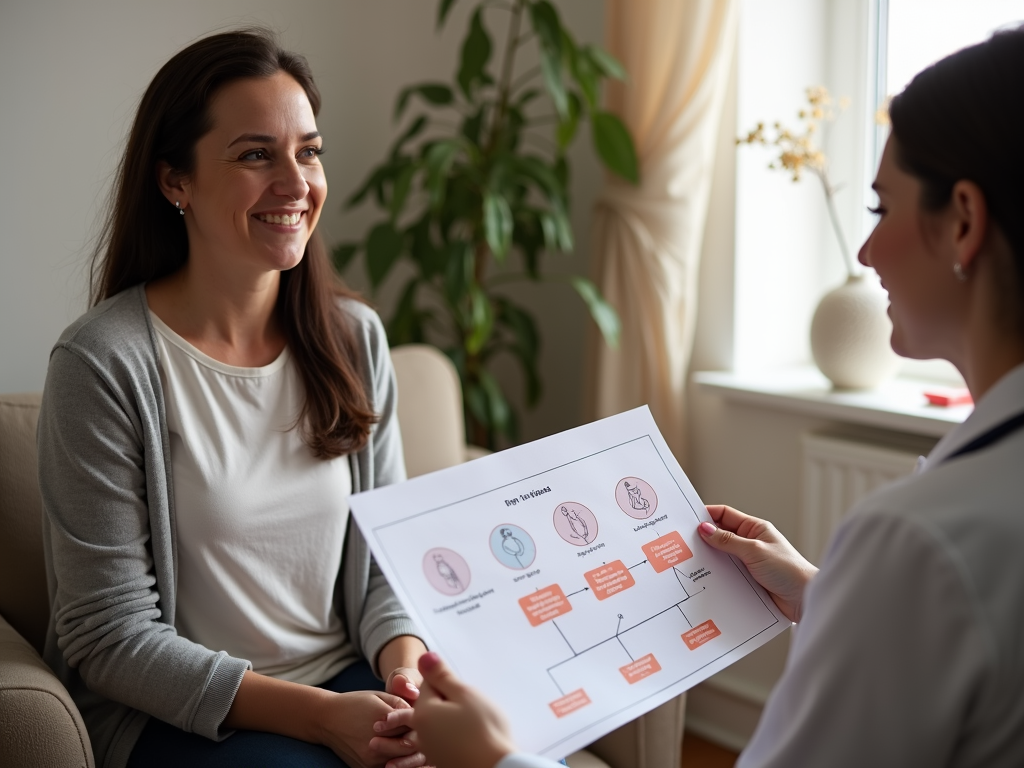Ovarian Stimulation 101: What Older Women Need to Know
April 12, 2025, 7:42 a.m.
Overview
Ovarian stimulation is a key part of fertility treatments, especially for older women. This article dives into what ovarian stimulation involves, the unique challenges women over 35 face, and the latest advancements that offer hope. It’s your guide to understanding this process and what it means for you.
What is Ovarian Stimulation?
Ovarian stimulation is a fertility treatment that uses medications to encourage the ovaries to produce multiple eggs. It’s often paired with in vitro fertilization (IVF) to boost the chances of pregnancy. The process starts with hormone injections, like follicle-stimulating hormone (FSH), to help grow several egg-containing follicles in the ovaries. Once mature, these eggs are retrieved for fertilization.
For many women, this step feels like a mix of science and hope. I’ve seen patients light up when they learn how this works—it’s a chance to take control of their fertility journey.

Challenges for Older Women
Age changes everything when it comes to fertility. After 35, a woman’s ovarian reserve—the number of eggs she has left—starts to drop quickly. This makes ovarian stimulation for older women trickier. The ovaries might not respond as well to the medications, and fewer eggs may develop.
Egg quality also declines with age, which can lower success rates. Plus, there’s a higher chance of side effects like ovarian hyperstimulation syndrome (OHSS), where the ovaries overreact and swell. I’ve spoken with women who felt discouraged by these odds, but knowledge is power here.

Advancements in Reproductive Medicine
Here’s the good news: Advancements in Reproductive Medicine for Older Women are changing the game. Newer medications and smarter treatment plans are helping more women succeed. Doctors now tailor protocols to fit each woman’s needs, based on her age and ovarian health.
Better monitoring—like regular ultrasounds and blood tests—lets specialists tweak the process in real time. I’ve seen how these updates give older women a fighting chance, turning what once felt impossible into a real possibility.

Tips for Older Women Considering Ovarian Stimulation
If you’re thinking about ovarian stimulation, here’s what you can do to prepare:
- Talk to an Expert: Find a fertility specialist who knows how to work with older women. They’ll check your ovarian reserve and suggest the best plan.
- Know the Pros and Cons: This treatment boosts your odds of pregnancy, but it’s not risk-free. Ask questions and weigh your options.
- Boost Your Health: Small changes—like eating well, cutting back on stress, or quitting smoking—can make a difference.
- Find Support: Join a group of women going through the same thing. Sharing stories can lift your spirits.
These steps helped a friend of mine feel more in charge of her journey.

Success Stories and Case Studies
Real stories show what’s possible. Take Sarah, who was 42 when she started ovarian stimulation. After years of trying, she worked with her doctor on a custom IVF plan. Nine months later, she welcomed a healthy girl. Her advice? “Trust the process, but ask lots of questions.”
Then there’s Lisa, 38, who hit roadblocks—like a cycle canceled due to low egg numbers. She switched clinics, got a new protocol, and now has twins. These women prove that age isn’t the whole story—determination and good care matter too.

Comparing Stimulation Protocols
Here’s a quick look at common approaches:
| Protocol | How It Works | Best For |
|---|---|---|
| Standard Protocol | High-dose FSH to grow many eggs | Younger women |
| Mild Stimulation | Lower doses, fewer eggs | Older women, less risk |
| Natural Cycle IVF | No drugs, uses your natural egg | Low reserve cases |
Your doctor will pick what fits you best. I’ve seen mild stimulation work wonders for women over 35.
Conclusion
Ovarian Stimulation 101: What Older Women Need to Know is all about understanding your options. Yes, age brings challenges, but today’s fertility treatments offer real hope. With the right specialist, a solid plan, and a little grit, many women over 35 are building families. You’re not alone on this path—take it one step at a time.